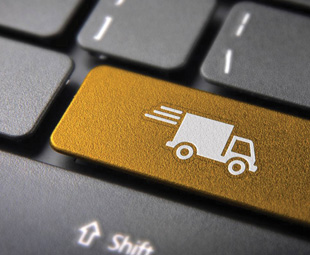Digitisation and software in the supply chain

FOCUS explores some of the latest third-party offerings that the transport and logistics industry could use to improve efficiency. This month, we go digital.
Electronic this, technology that, data the other … The world has gone mad for digital solutions that help to make daily life easier. Whether you’re checking the latest sports results, or need to keep track of a delivery that’s currently moving across town, you can be sure that “there’s an app for that”.
In the case of moving goods across town, business system solutions provider, Strato IT Group, has come up with an interesting business application for delivery documentation – called StratoPod.
Cassie Lessing, MD of Strato IT Group, explains that apps represent an increasingly important channel for companies to deliver content. “There is a strong case for logistics and transport service providers to adopt and utilise emerging technologies like mobility, digitisation and cloud, or risk losing out to early adopters,” he explains.
The mobile, cloud-based StratoPod app is designed to deliver process improvements and the economies of scale, efficiencies and the possibility of rapid adoption inherent in cloud offerings. For transport and logistics organisations, there is an opportunity to eliminate the risk of lost paper documents and decrease delays in payment for lost goods.
StratoPod has already been adopted by the likes of Toyota South Africa’s National Parts Distribution Centre to facilitate the automation of logistic processes and the digitisation of delivery and other transport-related documentation.
“The solution has been developed using world-class Sybase technology from SAP. It provides the highest level of data security and can operate independently, or be integrated with most recognised business technologies, regardless of the device used,” Lessing explains.
The StratoPod app is complemented by a cloud-based data repository that facilitates real-time visibility of goods in transit across all suppliers, customers and logistics operators in the supply chain.
“Applications that successfully reduce costs, such as those associated with storage and archives, are a positive step forward and are likely to make a lasting impact on the transport and logistics industry well into the future,” concludes Lessing.
Software savvy
According to COO of VSc Solutions, Grant Marshbank, solutions should enable companies to compete locally and outperform the highly advanced global logistics industry. The software that enables this should be able to create, store and leverage data.
“It’s become critical to collect, process and view data in real time to present a true view of the state of a supply chain as a basis for informed decisions. No part of the supply chain should be reported on in isolation.”
“Much can be learnt just by properly structuring the data in a supply chain. Deploying software usually sees linear gains; exponential growth is possible from decisions based on integrated data that unlocks hidden value,” says Marshbank.
“If a system offers true integration it will deliver end-to-end, real-time visibility of data across the entire supply chain – including service providers, trading providers, warehouses and distribution providers,” Marshbank concludes.
Published by
Focus on Transport
focusmagsa




